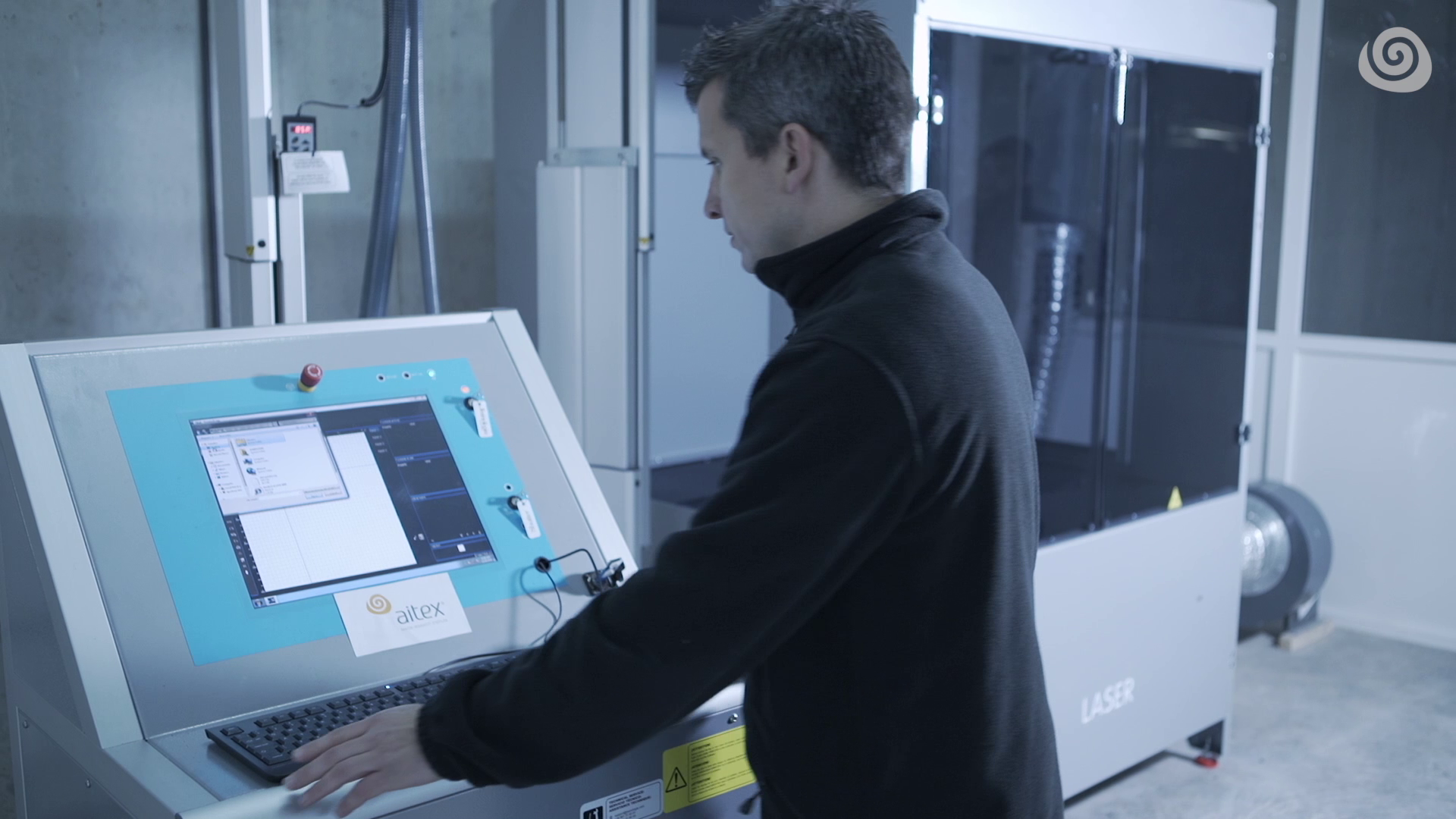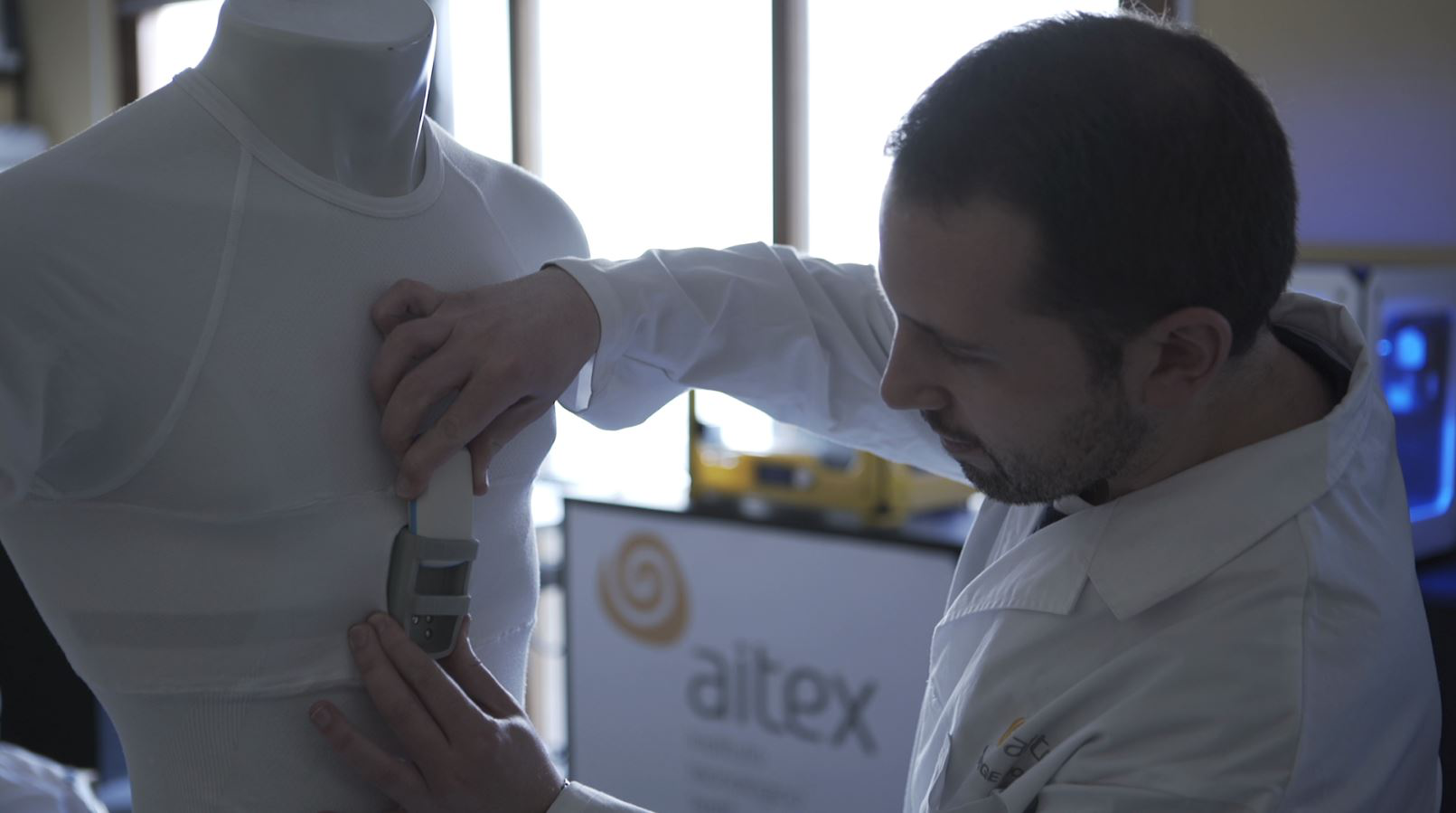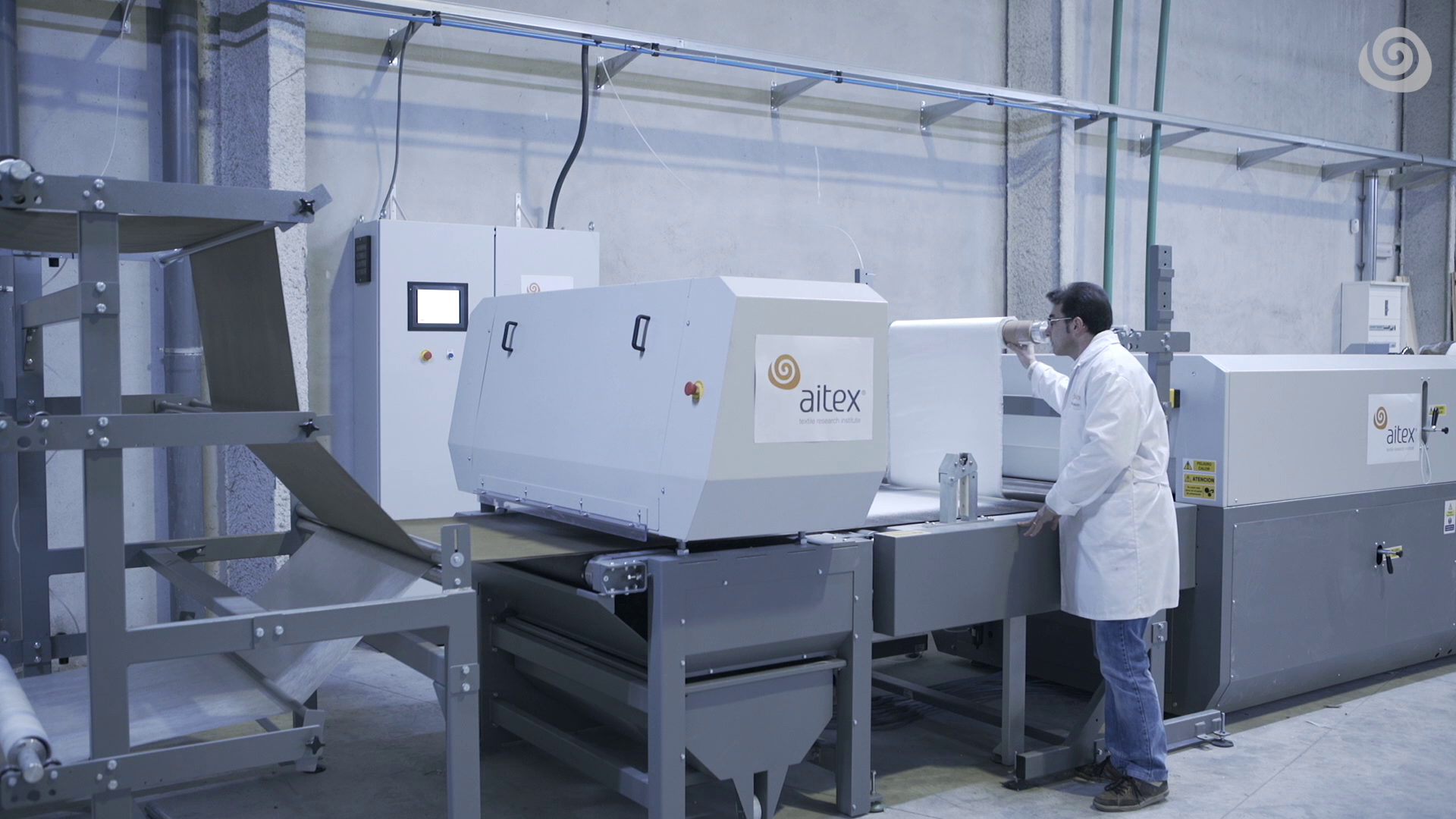Asociación de Investigación de la Industria Textil - AITEX
Asociación de Investigación de la Industria Textil - AITEX
Carretera de Banyeres 10, 1
03802 Alcoi
Spain
Telephone+34 965 54 22 00
Fax+34 965 54 34 94
About us
AITEX, is a private research association which performs characterisation trials and certification of textile materials and articles for a wide range of sectors including interior design, fashion, work wear, healthcare, sports and leisure, land and sea transport, aerospace and sports surfaces.
The AITEX’s core objective is to create and transfer knowledge of textiles to the private sector, making the textile industry more competitive and opening up doors to new opportunities with a high added-value factor. The Institute promotes modernisation and the introduction of emerging technologies through its on-going R+D activities and other projects which contribute to the evolution of the textile industry, and issues the most appropriate product certifications to allow an article to compete in the international marketplace and facilitate its introduction into high-end niche markets.
AITEX is Spain’s leading research and innovation centre and provider of advanced technical services to the textile industry. The Institute has a network of nine international offices providing cover for its associates and clients in fifty countries, and this has led to the Institute becoming one of Europe’s leading research centres. AITEX research work has culminated in the signing of several bilateral agreements with centres from around the world to exchange experiences, participate in international R+D projects and generate know-how to provide the private sector with a value-added factor for their products. The Institute’s laboratory services offers its members the most up-to-date equipment and infrastructure for the characterisation of products, QA and certification to the most demanding international standards and regulations and AITEX is one of Europe’s best equipped centres, with the widest scope of technical accreditation facilities with ENAC – ILAC approval (the national and European accreditation bodies).
More about us
Special Interests

Keywords
- innovation
- reserch textile institute
- research
- ppe
- aitex
Our Products

TECHNICAL FINISHING, HEALTH, COMFORT, SPORTS AND THE ENVIRONMENT
The Institute is involved in the R+D of surface finishing techniques for new-generation textiles to provide them with advanced properties and functions, and the development of textile solutions applied to health and hygiene, sports and comfort and the environment.
AITEX develops textile materials for use in biomedicine and biotechnology: the Institute’s work on biomedical applications brings it into close collaboration with health research institutes and hospitals and our attention is focused on biomaterials destined for fields such as tissue engineering, slow-release of pharmaceuticals, prosthetics and dressings.
Technical finishing
When a fabric surface receives a special treatment it can acquire advanced properties and functions, and AITEX is active in this field in the following areas of technological research:
- Surface treatments
- Coatings and laminates
- Garment-finishing technology (O3, laser, nano-bubbles)
- Electrospinning
Health
The healthcare sector is a growing market which offers enormous potential for the textile industry. Healthcare textiles are at the forefront of protecting the patient’s health as they are in direct, intimate contact with the skin. AITEX is closely involved in researching new textiles for the sector with enhanced performance to meet the demands of a range of specific applications. In the field of biomedicine, nanoveils are being developed which can be used in tissue engineering, as well as biocompatible textiles for implantable prosthetics and webs for supporting hernias, among others.
I. Tissue engineering
- Nanoveils: nanofibre veils are ideal for use in tissue regrowth
- Hydrogels: 3D polymer webs of natural or synthetic fibre have an extraordinary capacity to absorb fluids without breaking down or dissolving.
II. Implantable materials: biocompatible textile structures for improved prosthetics
III. Therapeutic and healthcare material
- Controlled-release of pharmaceuticals: the incorporation of active compounds during manufacture.
- Bioactive textiles: reduce and eliminate bacteria, fungi, mites and other parasites
- Applied research in the development of a range of health and treatment materials including dressings and sutures.
IV. Cosmetics and hygiene materials
V. Medical and hospital textiles
VI. Sleep products
Sport and comfort
Textile fabrics are vital elements of any sporting and outdoor activity and the Institute is constantly working on improving fabric comfort for articles for every type of sport to improve a garment’s performance in extreme climates.
- Thermal and acoustic comfort
- Ergonomic, functional and physiological comfort
- Acoustic comfort
- Protection and safety for the athlete
- Enhancing performance
- Health and safety
The environment
Research of new techniques, technologies and approaches to reduce the environmental impact of an industrial process.
- Efficient use of water resources
- Minimising and re-evaluating resources
- Textile ECO-DESIGN
- Energy efficiency: product development
- Processes: energy efficiency – clean technologies

SMART TEXTILES AND ICT SOLUTIONS
AITEX develops R+D+I projects to create Smart textiles and ICT solutions for the textile industry and is also closely involved in new technology assessment, the transfer of new technologies to companies.
The Institute has the technological infrastructure necessary for this field of research.
- Textronic laboratory
- High-performance embroiderer
- Experimental equipment to print electronic circuits on fabrics
- Experimental artificial vision equipment
- Experimental 3D printer
LINES OF RESEARCH
Smart textiles
Smart textiles can detect and react to physiological, environmental, mechanical, electrical or magnetic external stimuli to provide the wearer with an additional benefit and often incorporate information and communication components.
I. Textronic sensorisation: the integration of electronic devices in textile structures
This line of research studies the development of projects concerned with the following:
II. Printed electronics
Advances in printers and inks have meant that successive layers of material can be built up, each with different conductive and electrochemical properties and characteristics which in turn means that new applications can be created such as:
III. The functionalisation of yarns and fabrics
Advances in materials have meant that the fibre, yarn, fabric or the finished garment itself can now be enhanced with functions:
IV. 3D printing
3D printing allows much shorter lead times between product design and final production and is cheaper and easier to operate than other additive manufacturing processes. This research line mainly studies the following:
ICT solutions
Among the many advantages of the industrial applications provided by information and communication technology, ICT helps optimise industrial processes, improving performance, sales management and contact between clients and suppliers as well as providing better data management tools to aid the decision-making process.
I. Artificial vision
AV is an extremely useful tool for acquiring, processing and analysing images captured during high-speed, repetitive processes which would be impossible with the naked eye. The Institute is working on the following research and development lines:
II. RFID technology
Radio Frequency Identification (RFID) improves the traceability of products through the supply chain and optimises stock control, speeds up order processing and reduces picking errors. AITEX is working on projects related to the following lines:
III. Industria 4.0
The core goal of Industria 4.0 is the introduction of digital technology into industry to allow devices and systems to interact and modify or adapt processes, products and business models. To this end, help will be provided to textile companies seeking to implant innovative digital systems.
IV: Emotional interactive commerce

NANOTECHNOLOGY APPLIED TO TEXTILES. THE DEVELOPMENT OF FIBRES, SPINNING AND TECHNICAL WEAVING
Nanotechnology and technical fibres for the development of products and industrial processes: the use of nanotechnology helps in the development of enhanced textiles with a range of technical properties which include: anti-bacterial, fungicidal, hydrophobic, hydrophilic and nano-coated fabrics. There are also thermally resistant, conductive, anti-static, breathable, high-strength, bulletproof and camouflaged fabrics and those which have been sensorised to create Smart textiles. The Institute is fully equipped with all the experimental plant and necessary infrastructure to develop the following lines of research.
Nanotechnology applied to textiles
I. Functionalisation via compounding. The additivation of thermoplastic matrices with nanoparticles
The formulation of compounds or masterbatches for spinning.
Thermoplastic matrices:
- Nano-additives: metals, oxides metallic matrices, silicates (clays), pigments, carbon materials and microcapsules.
- Other additives: CB, microspheres, PCM’s, conventional pigments, photo and thermochromic, phosphorescent and fluorescent additives.
II. Functionalisation via coating. Functional coatings on fibres
- Melt-coating to apply a molten polymer to the surface of a yarn.
- Dip-coating by immersion. ➢ Technical melt spinning
I. Spinning multifilament yarns
Creating a continuous filament
The development of multifilament fibres using melt spinning.
II. Monofilament spinning
Development of melt-spun monofilament yarn.
III. Spinning
- Development of flat tape
- Optimisation of thickness/width ratio
- Bicomponent technology Textile processing technology
Processes and products in the spinning subsector value chain.
I. Air-texturing (TASLAN). ATY yarn
II. Friction texturing. DTY yarn
Texturized by false twist
III. Complementary operations
- Twisting and commingling
- Crimping
- Cutting for staple fibres
IV. Plain weaving
To develop prototype flat fabrics with different weaves and densities.
V. Warp knitting
VI. Splitting; from multi to monofilament.

NEW MATERIALS AND SUSTAINABLE PRODUCTS. REVALORIZATION STRATEGIES OF INDUSTRIAL AND NATURAL WASTES BASED ON THE DEVELOPMENT OF NON-WOVENS AND COMPOSITES
The Institute is working on the development of new composite products. Composites are widely used in a variety of industrial sectors including the automotive and aeronautics industries, construction, marine architecture and sports and represent an important alternative to traditional materials such as steel, aluminium and wood. Creating technological solutions from composite materials is now within the reach of many manufacturers and there is a growing demand for composites.
Composite materials combine high-strength and low-density with excellent corrosion resistance and provide industrial design engineers with a highly versatile material.
The use of bio composites from renewable resources using natural fibres and vegetable oil-based polymers represents an important sustainable alternative to the more traditionally-used petrochemical-based composites.
With respect to sustainability, a wide variety of innovative products is now becoming available made from natural compounds and they are fast becoming a viable alternative to synthetic reinforcing fibre, particularly in the automotive and building industries.
Prototyping and characterising advanced composites.
I. Vacuum-assisted resin transfer moulding pilot plant (VARTM).
II. Compression moulding pilot plant.
III. Precision three roll mills.
AITEX has the facility to develop additivated gel coats and resins with solid-state materials such as micro and nano particles of differing chemical nature, stabilisers and inorganic compounds, etc.
IV. A pilot plant for textiles finishing based on impregnation process.
V. Dual Flatbelt Lamination Technology
This is used to develop textile preforms with different orientations, the development of laminates with foams or honeycombs, manufacturing thermoplastic pre-pregs, etc. the facility can feed a variety of hot-melt adhesives in powder, film or web formats and has been designed to process flexible and rigid materials with a working width of up to 1 metre.
The Institute’s background in the field:
- Research and development of functional composites via the integration of textronic components and functional pigments and dyes.
- Research and development of biocomposites.
- Research and development of fire-resistant composites ➢ Non-woven technology.
VI. Wet-laid non-woven pilot plant.
Wet-laid technology is used to create non-woven fabrics with application in a huge variety of sectors: medicine, hygiene, cosmetotextiles, filtration, safety, composite materials, etc.
The Institute’s background in the field:
- Research and development of technical fibre-based non-wovens mainly for health and hygiene, safety and filtration.
- Research and development of non-wovens and composites made from agricultural and industrial waste with uses in construction, packaging, the automotive industry, etc.
Development of sustainable products.
I. Technical consultancy on the development of sustainable products.
The development of bespoke sustainable-product R+D projects, both b2b and b2c.
The Institute’s background in the field:
- The development of sustainable plastics from biopolymers
- Revalorization of agricultural and industrial wastes/by-products and the manufacture of non-wovens and composite materials thereof.
- Development of sustainable textiles: the implementation of renewable and recycled raw materials.
- Technological consultancy on the use of clean technologies in textile processing.
- Technical consultancy on the eco-labelling of a product and the development of communication strategies for sustainable products.
- Carbon footprint studies.